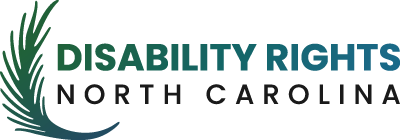TBI Program, Study, or Pilot
Type: Study
Agency Providing the Funding: US Department of Health and Human Services, Health Resource Services Administration (HRSA), Maternal and Child Health Bureau
Year Provided/Duration: 2009-2012
Funding Given To: Brain Injury Association of Virginia (BIAV), VA Department of Juvenile Justice, Virginia Commonwealth TBI Model System, VA Department of Correctional Education, Virginia Department of Education, and the Virginia House of Delegates
Population (Juvenile Justice, Criminal Justice, Parole, Probation, Jail, Prison, etc.,)
System Group
Juvenile Justice
Location
State Juvenile Correctional Centers
Purpose/Goal
To study the prevalence of brain injury among youth admitted to the juvenile justice detention system. To create a standardized assessment instrument that could be used as part of the routine evaluation given to juveniles upon admission. (Kreutzer & Lichiello, 2019)
Screening Tool Used
What tool was used?
Virginia Commonwealth University Brain Injury Screening Tool
When is screening done?
Upon entering the juvenile justice system.
What happens after screening?
Information Unavailable
Who Conducted Screening?
Project Researchers
Data Collection
Tracking
Information on the method of tracking unavailable.
Findings
Researchers found that 53% of youth admitted to the juvenile justice system reported a history of sustaining at least one traumatic brain injury. (Goodwin & Teigen, 2019)
Among the 867 participants, 455 (53%) reported a history of hitting or hurting their head. Using the VCU Brain Injury Screening Tool, the 455 with a history of hitting or hurting their head were asked about medical care received and symptoms. (Kreutzer & Lichiello, 2019)
Report findings were extensive and cannot be added as PDF’s to our site. Please submit a request at the link above and we will send the report(s) via email within 24-48 business hours.
Community Resources
Information and Referrals
Information Unavailable
Trainings
Through a collaboration with the Brain Injury Association of Virginia (BIAV) a series of short videos were produced to provide education on brain injury to front-line staff working for the Virginia Department of Juvenile Justice. (Goodwin & Teigen, 2019)
The videos were also designed for public viewing by a broad audience to include educators, healthcare professionals, and survivors of TBI, family members of survivors, and other interested individuals. In addition, brochures and informational packets were distributed with a Professional’s Guide titled “Working with Individuals with Brain Injury.” (Goodall, Chamberlain, McDonnell, & Joplin, 2013)
Agency Contact Information
Name
Brain Injury Association Virginia
Website
Brain Injury Association Virginia
Phone Number
Sustainability
Information Unavailable
Advisory Board
Yes.
Project Coordinators established a project Advisory Board comprised of representatives from the Virginia Department for Aging and Rehabilitative Services (DARS), Department of Juvenile Justice (DJJ), Virginia Commonwealth University’s TBI Model System, the Brain Injury Association of Virginia (BIAV), Department of Education (DOE), and Department of Corrections Education (DCE). (Kreutzer & Lichiello, 2019)
How was this information acquired?
Information was acquired through online published reports.
References: For more information on this states work, please see references
Goodall, P., Chamberlain, K., McDonnell, A., & Joplin, K. (2013).Virginia collaborative policy summit on brain injury and juvenile justice: Proceedings report. Health Resources and Services Administration.
Goodwin, K., & Teigen, A. (2019). State approaches for addressing traumatic brain injuries in the juvenile justice system. Washington D.C.: National Conference of State Legislatures.
Kreutzer, J., & Lichiello, S. (2019). Youth with Brain Injury in Virginia’s Juvenile Justice System. Richmond: Brain Injury Association of Virginia.
